This creamy butternut squash lasagna is a cozy and comforting vegetarian pasta recipe to share with friends or family. Layers of roasted butternut squash, spinach and goat cheese all come together beautifully in an incredibly saucy and creamy bechamel sauce.
Email me this recipe
We’ll send it straight to your inbox, along with weekly food inspiration!
I remember the very first time I prepared homemade lasagna. I was about 16 or 17 year old and was so proud to serve it to my family for dinner. Lasagna is indeed the perfect go-to dish to feed a crowd. It can be made ahead of time, it freezes easily, and you will love leftovers for your next lunch box.
My favorite lasagna are vegetarian, with lots of layers of vegetables and a creamy sauce. For this version, I took here inspiration from my Pumpkin, spinach and goat cheese quiche, which has become very popular among my readers. Here I use butternut squash as main ingredient, but because we use it mashed, you could also use any other winter squash you like.
Is it easy to prepare homemade lasagna?
Ok, so lasagna is delicious, there is no doubt about it. But is it easy to prepare lasagna? This recipe is not difficult to prepare. However, it can take some time if you jump into it right away. This is why I recommend you sit down before starting your recipe and list all the ingredients you need to make sure you get everything organized. Doing so will spare you a lot of time and enable you to go smoothly through the process.
Keep in mind that there are 3 main layers in the recipe:
- Butternut squash-cheese layer
- Bechamel sauce with spinach
- Lasagna noodles*
You can also prepare some ingredients in advance. For instance, dice, cook and mash the butternut squash up to a few days before making the recipe. As for the cheese, remove it from the fridge a few hours in advance to make sure it is at room temperature.
*Note about lasagna noodles. I used a box of oven-ready lasagna noodles, that you don’t need to pre-cook. Alternatively, you can also use fresh lasagna noodles.
How to make butternut squash lasagna?
- Start with the butternut squash. The recipe calls for mashed butternut squash, which means you need to dice and cook the butternut first. I like to roast mine in the oven with a drizzle of oil before mashing it; it brings some additional flavors. Alternatively, you can go for ready-to-use canned pumpkin puree (make sure it’s 100% pumpkin puree and not pumpkin pie filling).
- Mix mashed butternut squash with cheese. I use both ricotta cheese and soft goat cheese to ensure a soft, airy texture. Also, make sure the cheese is softened at room temperature before using it.
- Prepare the bechamel. This French sauce can be intimidating if it’s your first attempt, but there is no reason to. If you are afraid of lumps, make sure you keep whisking constantly while pouring the flour, and it should be just fine. Don’t forget to season, taste and adjust as needed.
- Add spinach to the bechamel. Because the sauce is hot, spinach will cook very quickly, so keep an eye on it and once wilted, remove from heat.
- Assemble the lasagna. Spread alternatively layers of cheesy butternut squash puree, spinach bechamel, grated cheese + goat cheese, and lasagna pasta in a shallow dish, finishing up with one layer of bechamel, plus some grated cheese on top.
See, it’s that easy to make lasagna. Who’s next to entertain his/her family or guests with the recipe?
More vegetarian/vegan recipes with butternut squash:
- Butternut Squash Risotto with Sautéed Mushrooms (Vegetarian)
- Butternut Squash Noodles with Spinach & Cashew Sauce (Vegan, Gluten Free)
- Cranberry Quinoa Stuffed Roasted Butternut Squash (Vegetarian)
- Butternut Squash Gnocchi with Lemon Butter Sauce (Vegetarian)
Butternut Squash, Spinach and Goat Cheese Lasagna
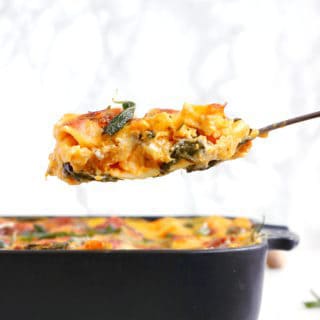
- Prep Time: 1 hour
- Cook Time: 45 mins
- Total Time: 1 hour 45 minutes
- Yield: 6-8 servings 1x
- Category: Savory
- Cuisine: Plant-based
- Diet: Vegetarian
This creamy butternut squash lasagna is a cozy and comforting vegetarian pasta recipe to share with friends or family. Layers of roasted butternut squash, spinach and goat cheese all come together beautifully in an incredibly saucy and creamy bechamel sauce.
Email me this recipe
We’ll send it straight to your inbox, along with weekly food inspiration!
Ingredients
- 1 box oven-ready lasagna noodles (or fresh lasagna)
- 1 butternut squash, peeled, seeded and cubed (about 6 cups/850g)
- 2 Tablespoons extra virgin olive oil
- Salt and black pepper
- 6 Tablespoons (80g) unsalted butter
- 2 cloves garlic, minced
- 8–10 fresh sage leaves + extra for serving
- 1 sprig fresh rosemary + extra for serving
- 1/4 cup (30g) all-purpose flour
- 2 cups (50 cl) vegetable broth, lukewarm
- 2 cups (50 cl) whole milk, lukewarm
- 1/4 teaspoon nutmeg, freshly grated
- 1 cup (250g) whole milk ricotta cheese, at room temperature
- 2 cups (500g) fresh goat cheese, at room temperature, divided + extra to sprinkle
- 1 cup (130g) shredded cheese (such as shredded mozzarella), to sprinkle
- 4–5 cups (120-150g) fresh baby spinach
Instructions
- Preheat oven to 375°F (190°C). Line a baking sheet with parchment paper.
- In a large mixing bowl, toss together the diced butternut squash with olive oil, salt and pepper. Transfer to the prepared baking sheet and roast in the oven for 25-30 minutes or until tender, stirring every so often to ensure squash is roasted evenly.
- Transfer to a shallow dish and mash the roasted butternut squash with a fork. Stir in the ricotta with 1 cup of the fresh goat cheese. Season with salt and pepper and stir well.
- Prepare the bechamel: heat the butter in a large skillet over medium heat. Add minced garlic, sage, rosemary, and cook until the butter begins to brown, about 2-3 minutes. Remove the sage and rosemary from the skillet. Whisk in the flour and cook for about 1 minute. Slowly pour in the milk and broth, whisking until combined. Add the nutmeg, salt and pepper. Taste to adjust seasoning as needed.
- Bring bechamel to a boil and stir for a couple of minutes. Add the remaining cup of goat cheese and stir until melted. Add spinach and stir until wilted. Remove from the heat and set aside.
- Lightly butter a 8×8 inch (21,7 cm) baking dish. Spread one layer of the bechamel with spinach in the bottom of the dish, cover with lasagna sheets, and spread a layer of the mashed butternut squash. Sprinkle some grated cheese and extra goat cheese on top, and cover with more bechamel.
- Add another layer of lasagna and repeat: spread one layer of mashed butternut squash, sprinkle some cheese over, add one layer of bechamel. Repeat one more time if needed, and finish with a layer of bechamel. Sprinkle the remaining grated cheese on top and bake for 45 minutes or until slightly golden-brown in surface. Let stand 5 minutes and enjoy!
Did you make this recipe?
Lastly, if you make this Butternut Squash, Spinach and Goat Cheese Lasagna, be sure to leave a comment and give this recipe a rating, letting me know how you liked it. And of course, don’t forget to tag me on Instagram! Thank you and enjoy!
This recipe is created in partnership with Peugeot Saveurs SNC.
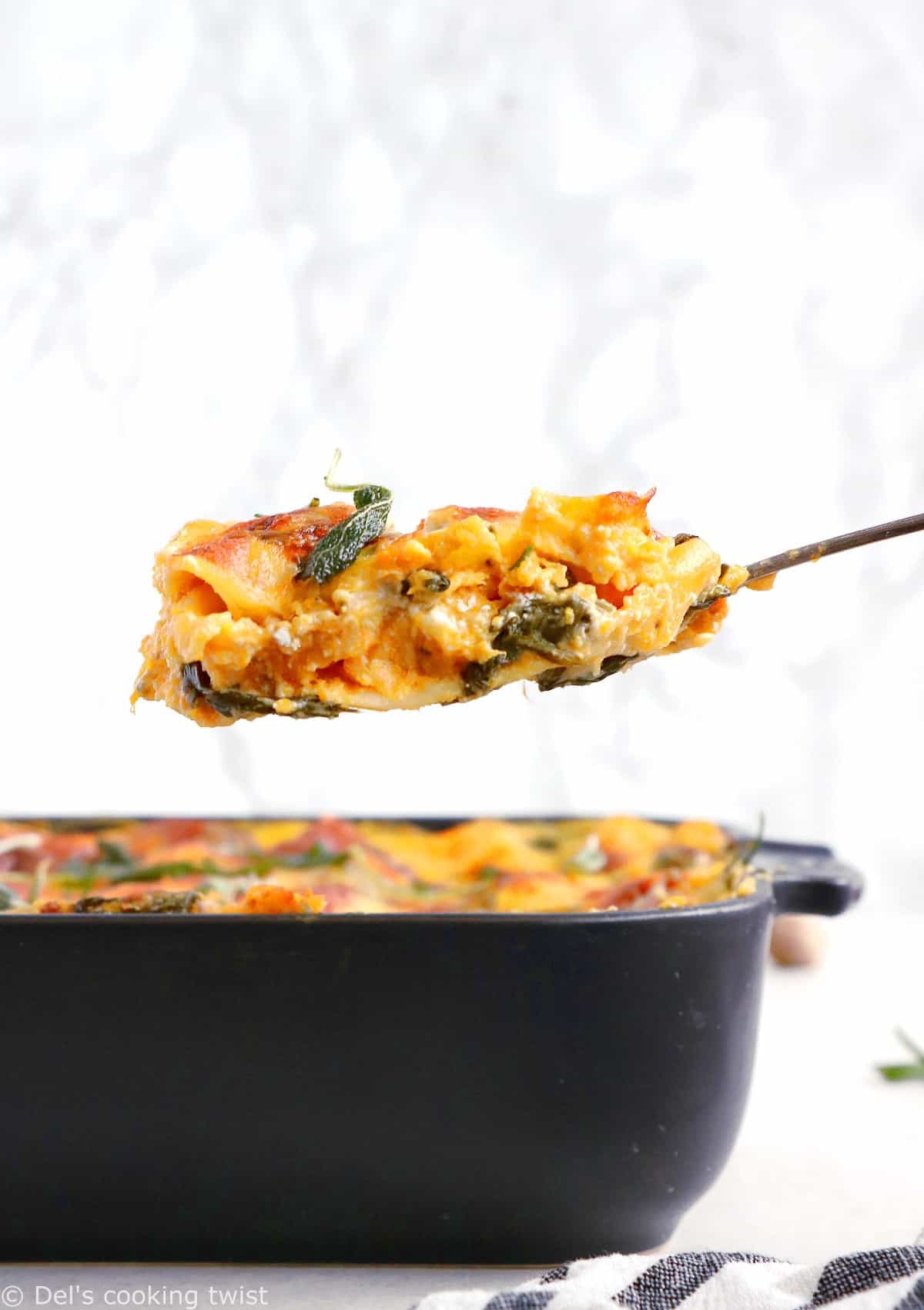
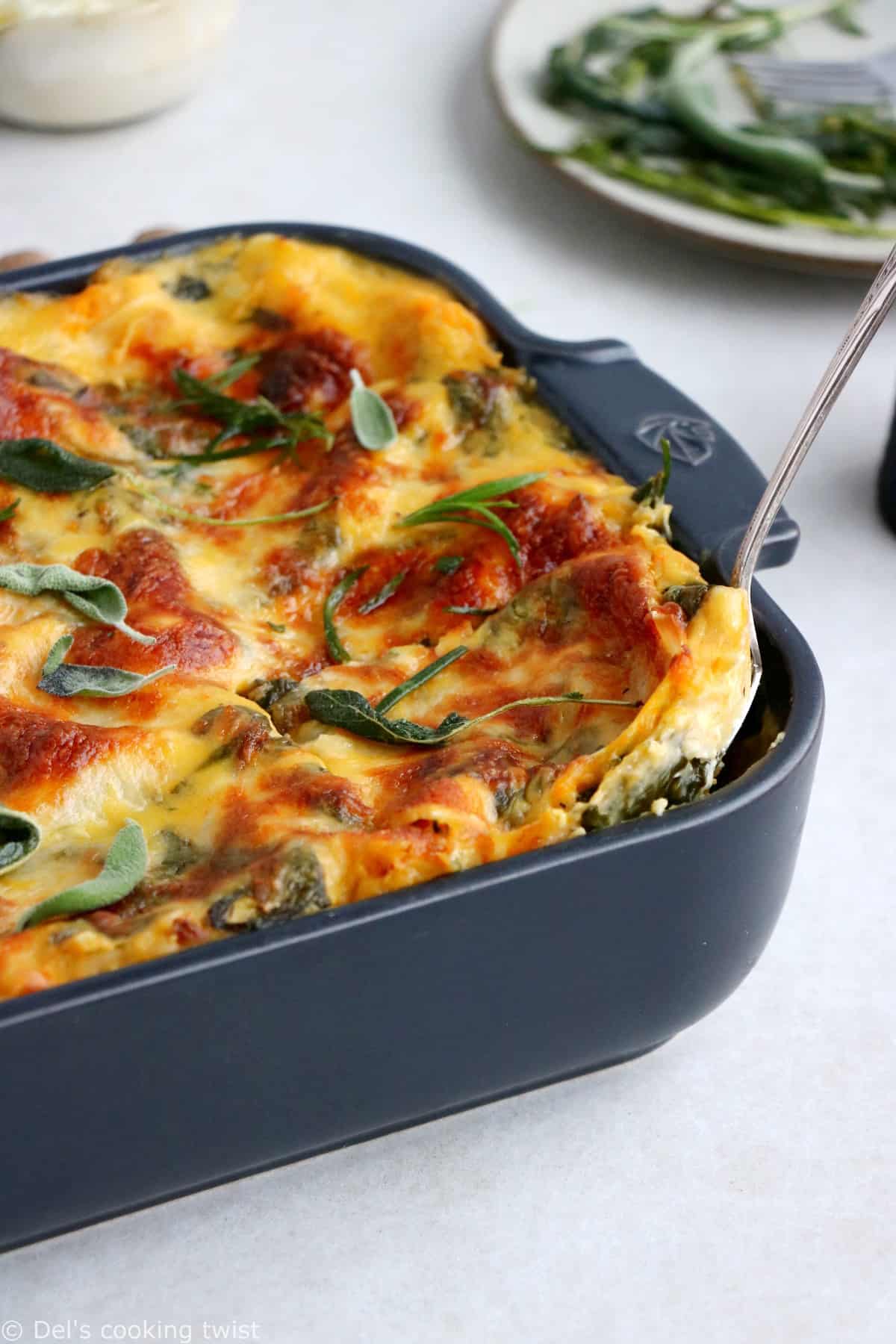
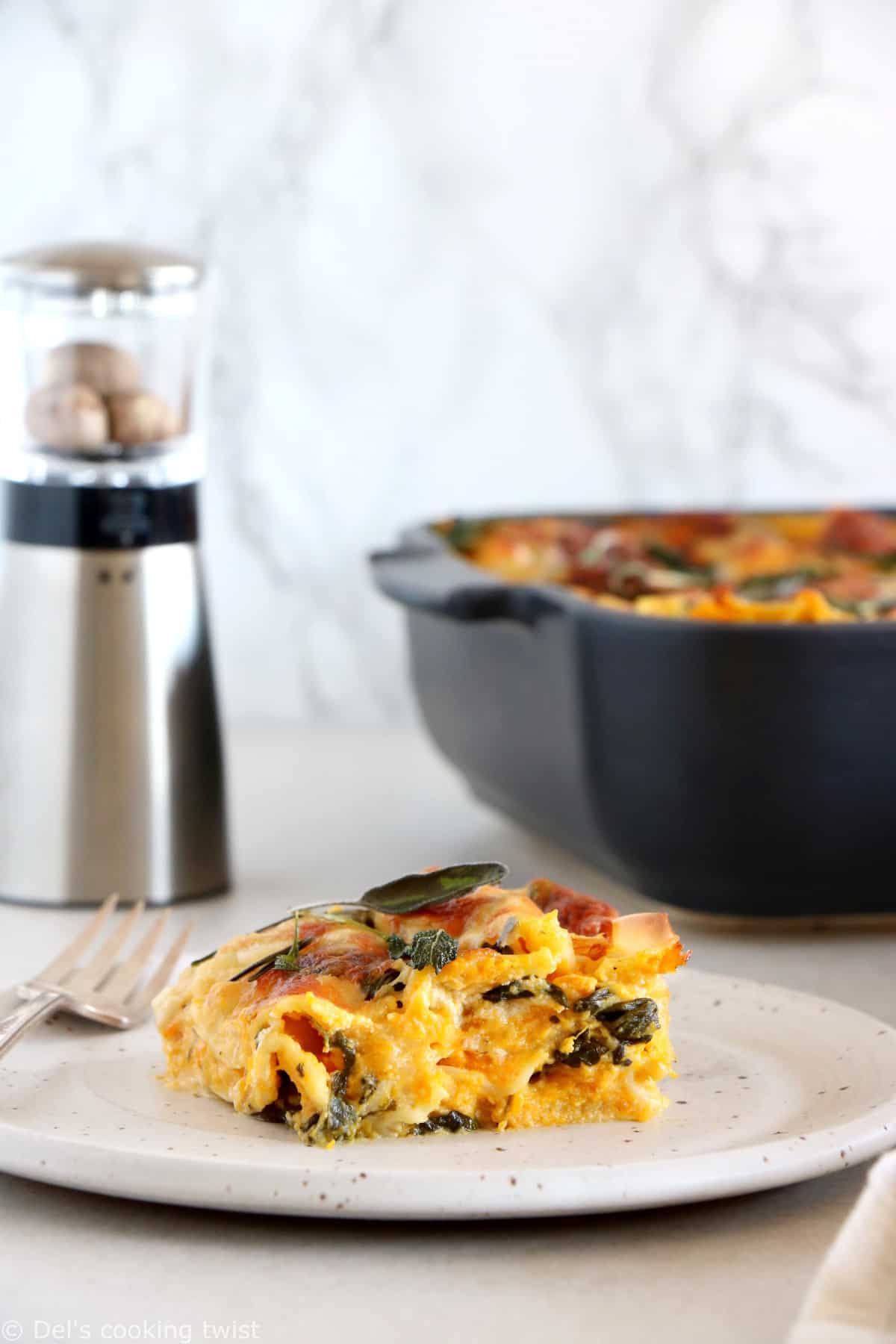
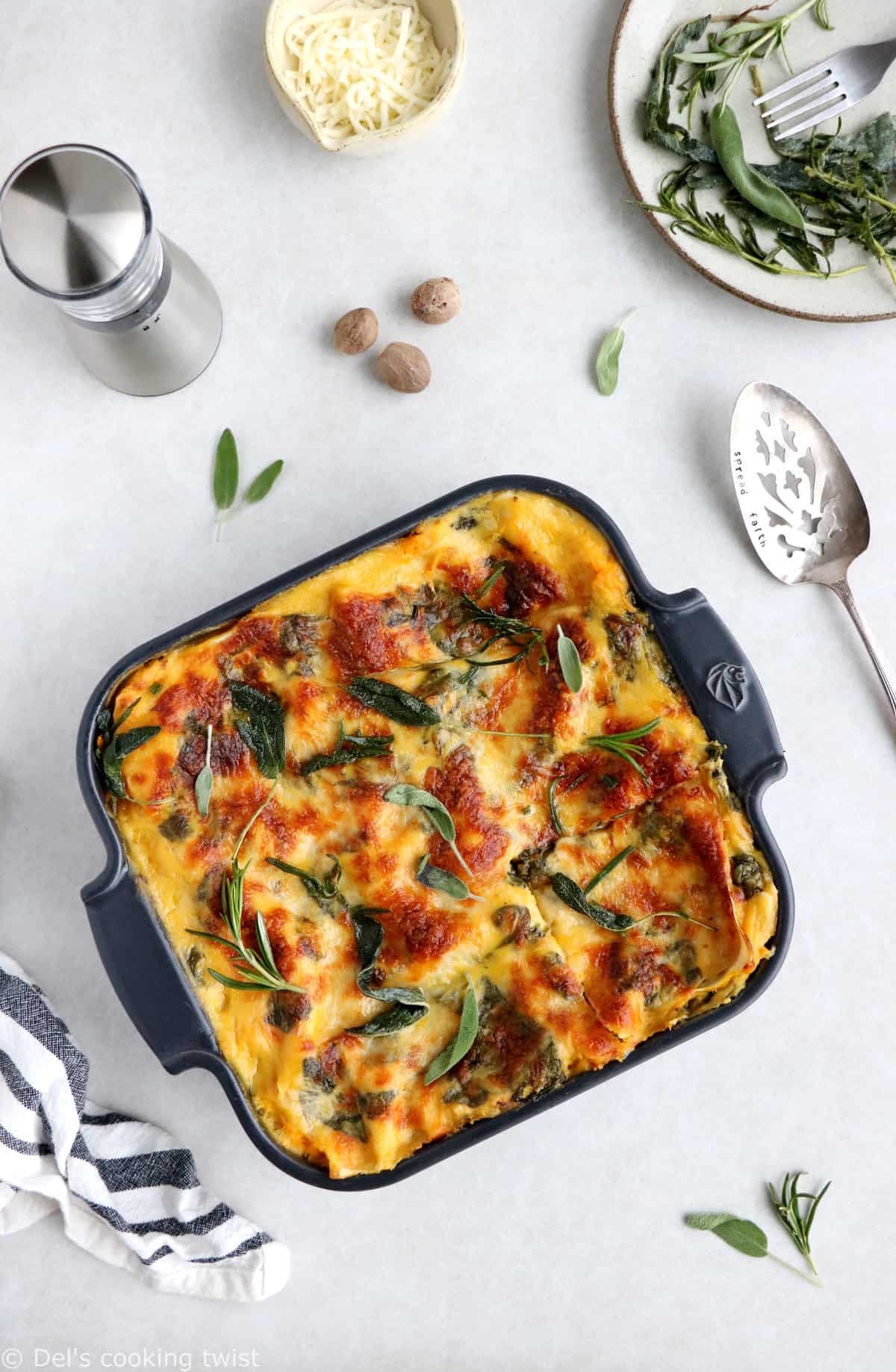
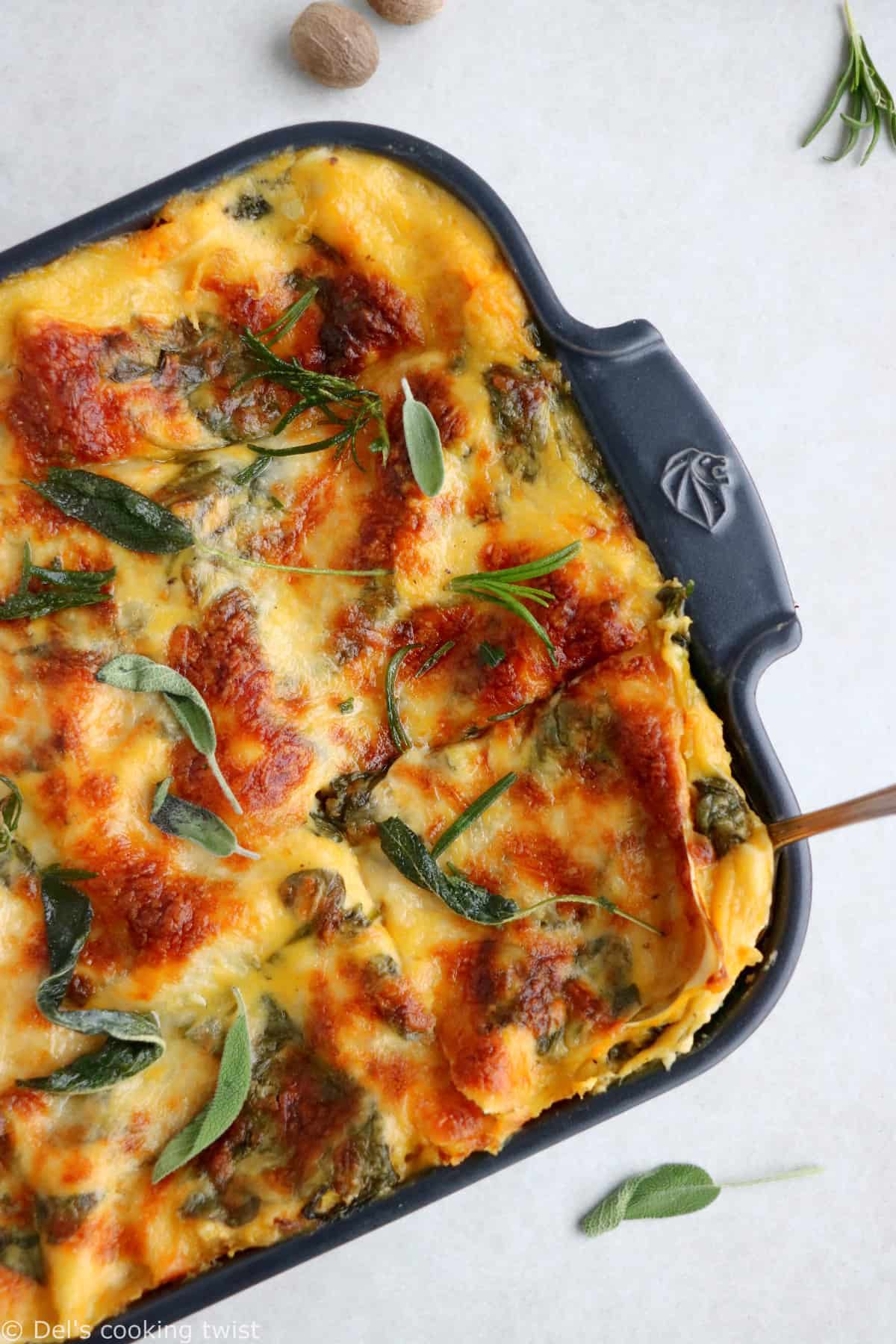
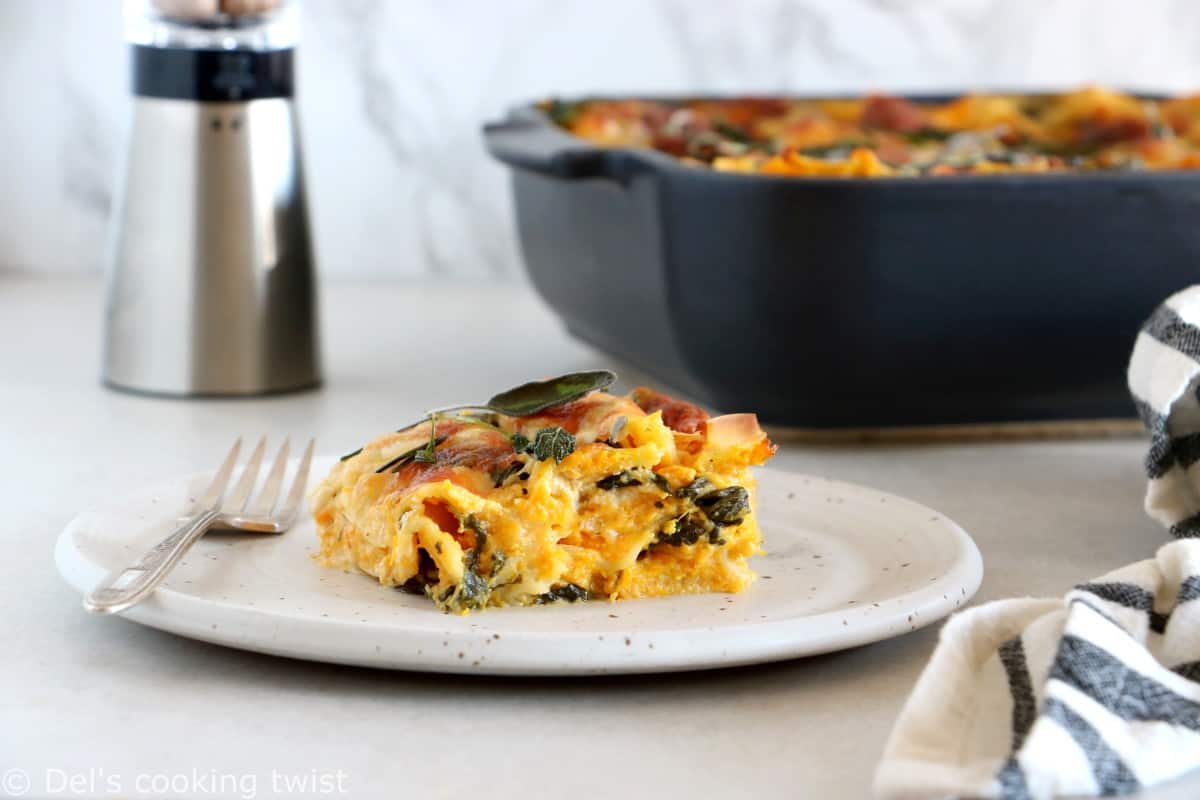

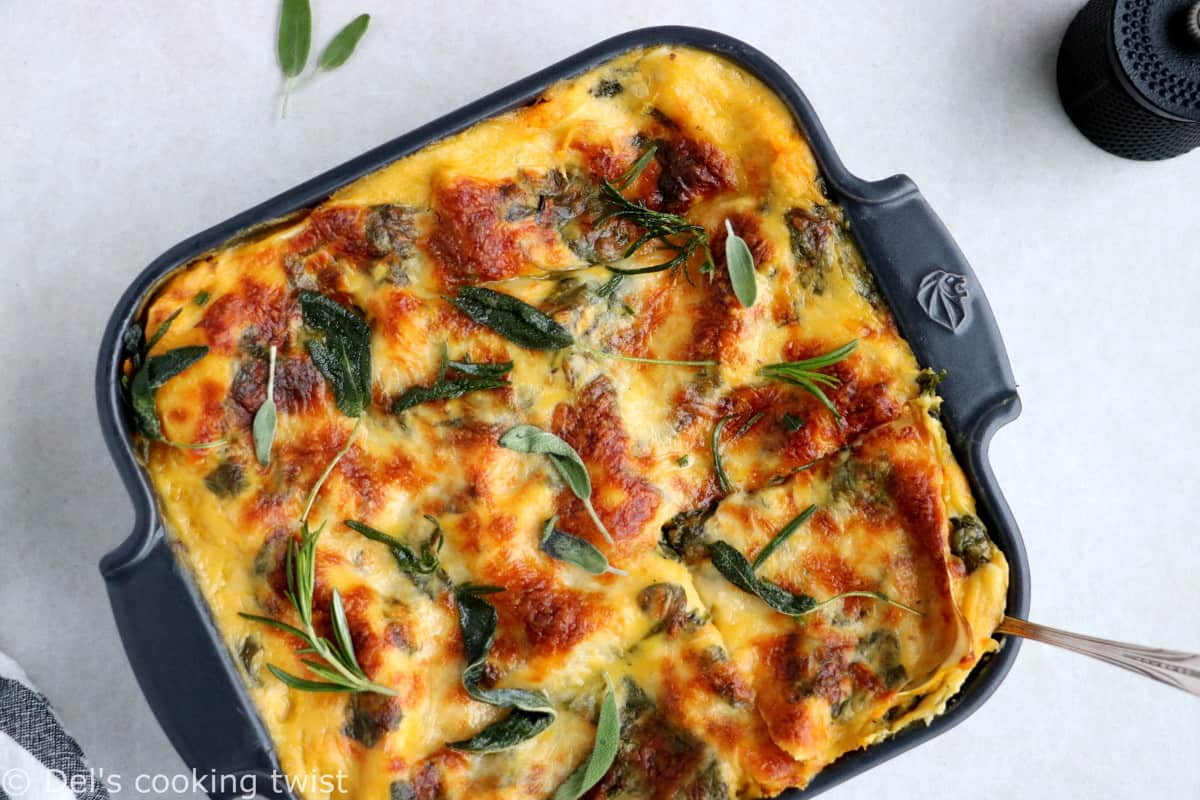

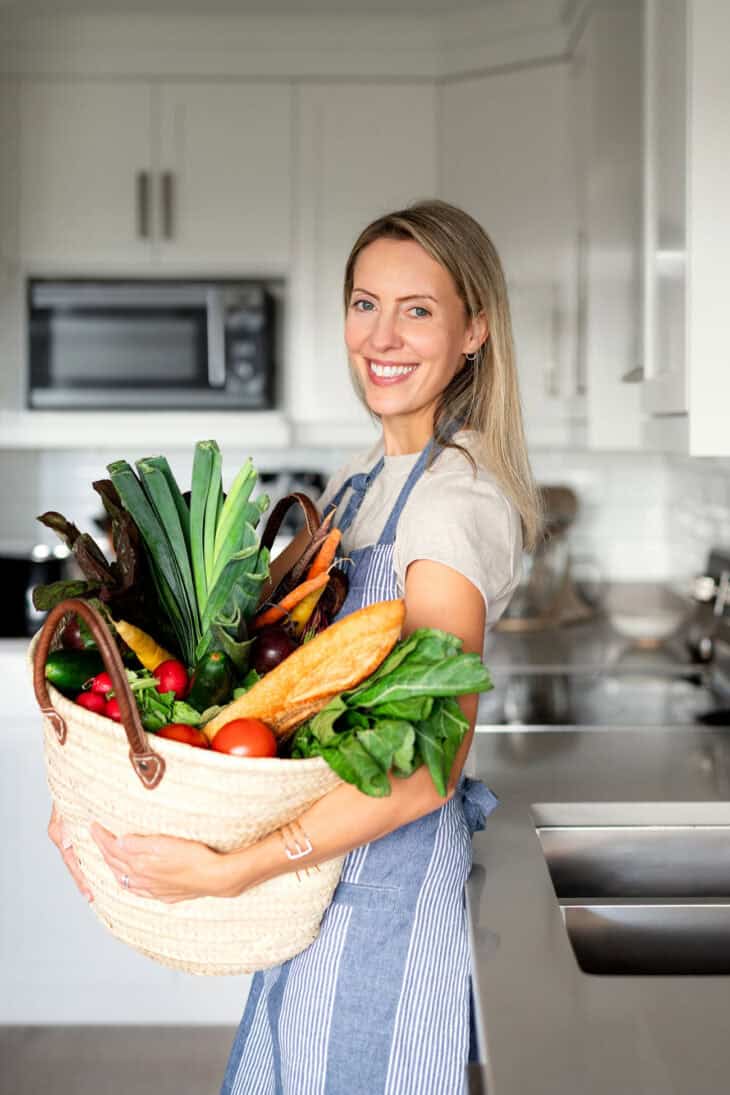
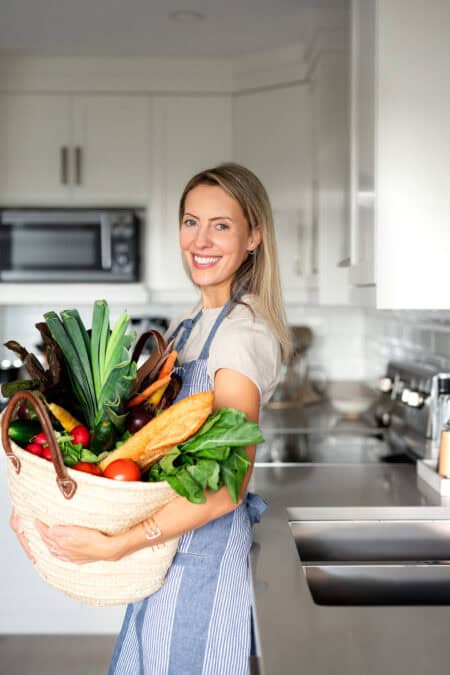
Joris
My favourite lasagna recipe. Made it multiple times and it’s always fantastic. Added some caramelised onions as Lucie suggested as well as a hint of maple syrup and pumpkin spices that complements the cheese really well.
Lucie Martin
Delicious – a definite keeper and a welcom change from the typical tomoto based lasagna. Next time, I may add some mushrooms and carmelized onions!
Delphine Fortin
I love the idea of adding caramelized onions and mushrooms next time. Well done and thanks for your feedback! Del
Stacie
I’m trying to make this but the lack of quantities for salt and pepper are making it difficult. I’m a beginner at cooking. Can you at least give a range for the quantities of salt and pepper in both the squash portion and becamel portion?
Delphine Fortin
Hi Stacie! I understand your concern. I recommend you try and taste the bechamel, then adjust the seasoning according to your own tastes. The reason why I don’t give quantities is because we always tend to season a little bit too much, which is not really healthy (in particular with salt). So best is to get used to using minimal salt amount, and this comes with time as we educate our palate. Keep in mind that it’s always better to use too little salt and add more afterwards than the other way around. Be confident, you will learn as you learn cooking I’m sure! Del